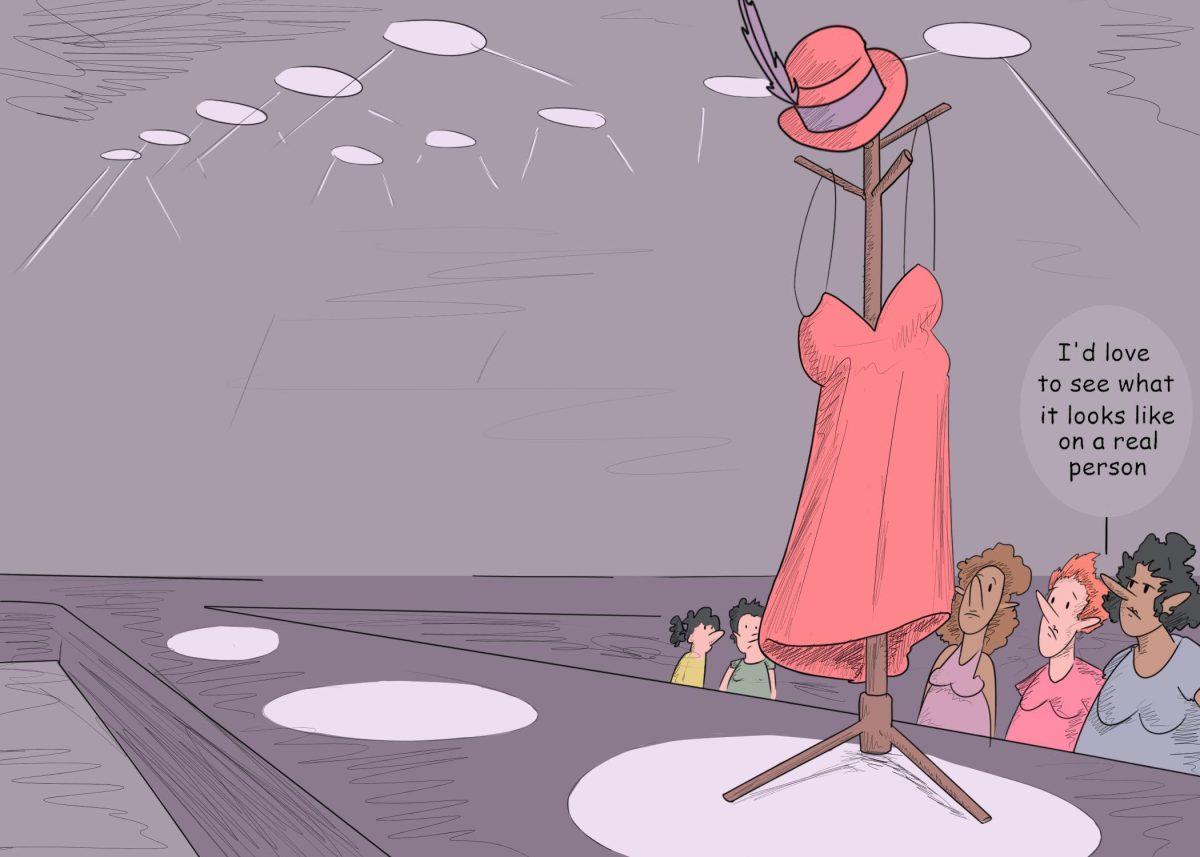Paris Fashion Week’s traditional trend of tall, skinny and mostly young models came to an end after the Le Défilé L’Oréal Paris fashion show on Sept. 28.
Fashion week usually marks the time when celebrities are invited to exclusive shows that will be broadcasted to the public. Serious-faced models strut down the catwalk in haute couture clothing only rich people can afford.
High fashion shows have become more inclusive over the years. There are more ethnicities. Some models are transgendered. There are even models with skin conditions.
Despite popular shows’ progression with inclusivity, there are no short, curvaceous or older models.
It’s time to address the elephant lurking at every fashion show—although the fashion industry embraces the uniqueness of beauty, it still grasps its traditional values of weight, height and age.
L’Oréal Paris became a trailblazer by straying away from those values and creating its own. Notable celebrities such as Camila Cabello, Eva Longoria and Helen Mirren walked in the show.
Cuban-American singer Cabello is short and curvaceous. Mexican-American actress Longoria is a 5-foot-2-inch woman. British actress Mirren is 74-years- old.
The diversity in these women’s height, size and age indicates the values of other high fashion shows are outdated.
L’Oréal’s values are shared by most women whose physicality doesn’t reflect the models on numerous runways. These three models meet realistic expectations of the female body.
The average height for women is 5-feet 4-inches, according to a 2016 research report from the Centers for Disease Control and Prevention.
If the clothes being displayed on models are supposed to be for the public to buy, then why does height matter? It’s standard a high fashion model is tall because she “fits the clothes better.”
Apparently, her lean legs, tiny waist and small breast display the clothing better than a woman with stumpy legs, a pudgy stomach and full breasts.
This narrow mindset of fashion designers and creative directors must be changed or the fashion industry will always be considered a superficial representation of beauty.
Most women don’t have the physiques of the models who work out for hours to keep their bodies resembling a Barbie doll. Some models stick to strict diets, but others are just skinny because they have high metabolisms.
The average woman’s weight fluctuates. Women shouldn’t be ashamed of their weight because they don’t have time to do hard core workouts, eat specific foods or don’t naturally burn calories fast.
It’s very rare to see an up-and-coming model who is past her early 30s. The majority of older models who still strut down the catwalk gained a reputation as a supermodel. Their credentials allow them to model alongside teens and young adults who look up to these older supermodels.
Although these supermodels are older than the average model, their money allows them to get plastic surgery and look like they’ve barely aged. This falsifies the aging of women.
It creates a distortion for young viewers who might believe they’re supposed to look like they’re in their 20s when they’re in their 40s.
Women who are the same age or older than these supermodels might feel they don’t meet the standard of beauty for aged women.
It’s important women see models of different heights, sizes and ages walking in well-known shows at next year’s fashion weeks. All types of women need to be represented to show the true definition of beauty in relation to femininity.
Jasmine Edmonson is a 21-year-old mass communication junior from Denham Springs, Louisiana.
Opinion: Fashion shows should be more inclusive, go beyond diversity in ethnicity
October 6, 2019
Problems with inclusivity and diversity still plague international fashion shows







